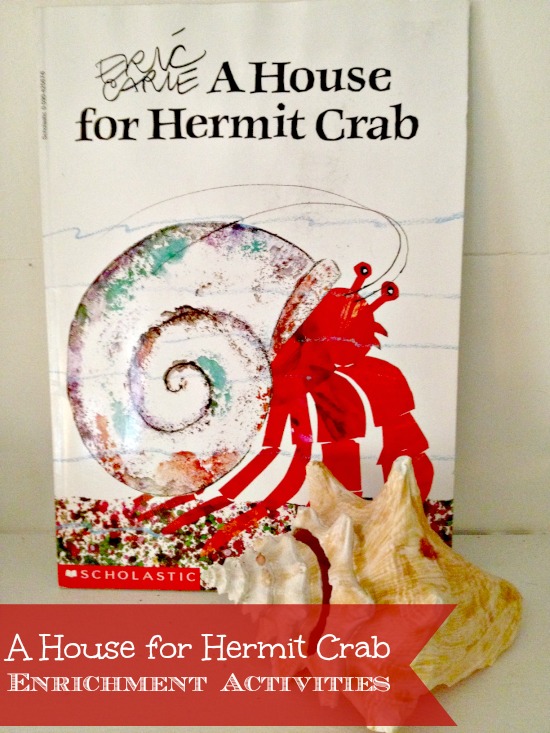A House for Hermit Crab by Eric Carle tells the story of a hermit crab in search of the perfect home. At first, he abandons his shell in hopes of finding something more decorative. As he explores the ocean floor, he meets a variety of friends who offer to help him. This story spans throughout the course of a year, and ends with the crab finding the perfect home, only to outgrow it and start anew. It is a charming tale, and one that is filled with many learning possibilities. Take a look below at 7 A House For Hermit Crab enrichment activities you can try with the story A House for Hermit Crab by Eric Carle.
A House for Hermit Crab Enrichment Activities
1. Calendar Exploration
Throughout the story, the crab is shown on his adventures from month to month. Each month is mentioned as he meets a new friend and adds some décor to his shell. Take this opportunity to look at a calendar with your child. Identify the months, write them down, and read the book again pointing to the months as they are mentioned.2. Make Connections
In the story, the crab outgrows his shell. Ask your child to think of things they have outgrown. On a piece of paper you can make a list of these items. Some examples might be shoes, jeans, hats, or even their baby bed. Talk about why we outgrow things. Ask your child if there was one item they could fit into forever, what would it be?3. Undersea Adventures
Take a moment to define some of the creatures discussed in the book. This would include coral, starfish, snails, sea urchins, sand dollars, clown fish, and lantern fish. If you are unsure what some of these creatures are, search the internet for some great pictures. Write the definitions of the words down so you can create a flip book of your new vocabulary. A flip book can be quite simple, just jot the definitions down on an index card and attach them together with staples or a binding ring. You can even invite the children to create an illustration for each word.4. Crabby Role Play.
Allow children to each take the role of one of the creatures in the book. As you flip a calendar and call out the month, the “crab” of the group can take turns role playing with the designated creature. Before you begin, you can discuss how creativity is welcomed, and their role can be as similar or as different from that of the book character as they wish. Simple costumes can be made by drawing the creatures on a small paper lunch bag and having them hold the “puppet” of the character they are playing.5. Artful Fun.
Eric Carle water paints on paper, then cuts out shapes to create his illustrations. Allow children to give this same process a try and create their own artwork. Simply paint on a piece of paper, allow some time to dry, then using scissors cut out your shapes. Glue the shapes to paper to create the image as the author does. You can try to recreate his illustrations or have children come up with their own. Compile all of the illustrations into a class book, or display for all to enjoy.6. Partner read.
Allow your child to partner up with you or a friend to choral read the text together. When they do this they will read together as a team in unison. This helps with pacing and utilizes their listening skills. When done, they can then ask each other three questions about the text: What was your favorite page? What would you change about the book? How do you relate to the character?7. Story swap.
Children find all sorts of ways to relate books to their own lives. Allow for some share time for them to talk about how they identified with this text. If you have a sea shell, allow them to hold it. The person holding the shell is the person who gets to talk and share while everyone else listens. When done, the child passes the shell on to another child who then gets to share.As you can see, there are all sorts of ways to make this story a fun learning experience for all. Give these 7 simple tips a try and see how you too can find further enrichment in the story A House for Hermit Crab.
Tag:


